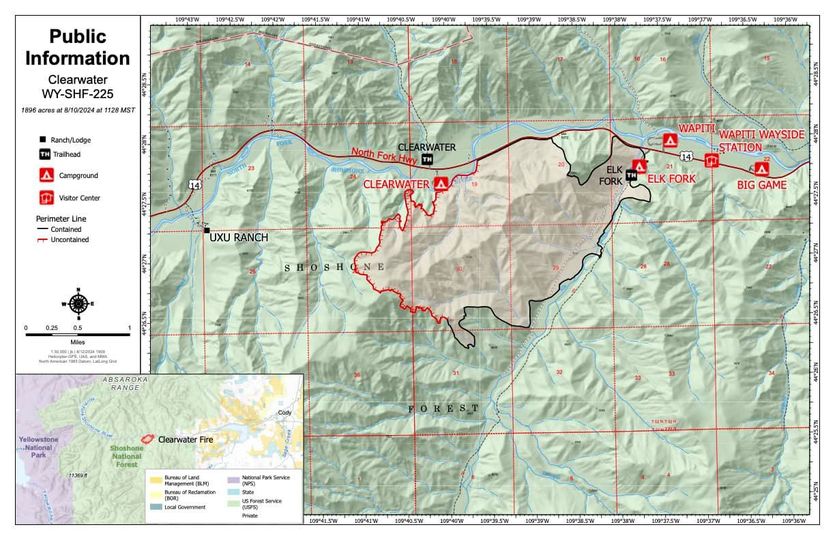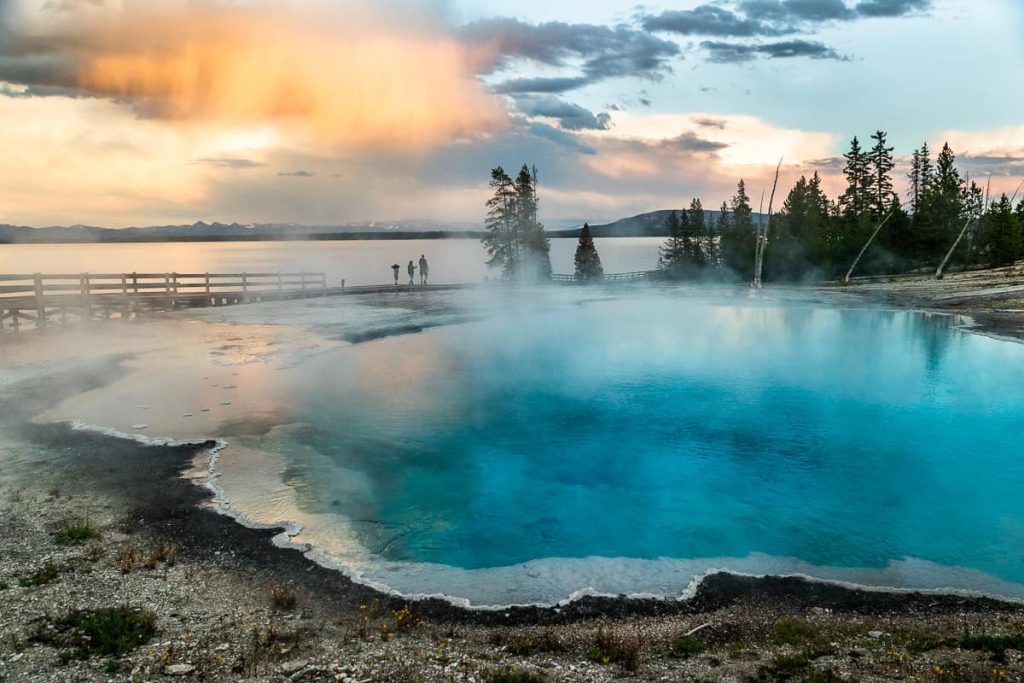Kirwin, Wyoming: 6 Intriguing Facts About Park County’s Ghost Town
Written by Nick on April 3, 2023
Kirwin: A Wyoming Ghost Town
Way back in the Shoshone National Forest, almost at the very head of the Wood River, lies a long-abandoned town site that proved lucrative for mining families until tragedy struck, bringing the ambitions of its residents to an abrupt end.
Kirwin, Wyoming, sits high in the Absaroka Mountains at 9,200 feet. The nearest “civilized” place is Meeteetse — population 314 — almost 40 miles away.
Kirwin is truly one of Park County’s hidden gems.
To get to Kirwin from downtown Meeteetse, you’d head south on Wyoming Highway 290. Just before Lower Sunshine Reservoir, take a left on Wood River Road.
Winding along the Wood River, you’ll find Kirwin at the base of Bald, Spar, and Brown Mountains, just before Cascade Creek comes in.
So now that you’ve made it, what’s so special about Kirwin, anyway?
Gold Drew People to Kirwin, Wyoming
According to the US Forest Service, a man named Kuyendall led the first group of gold prospectors into the mountains near Kirwin in 1870. However, the expedition was trespassing.
At the time, the region fell under the terms of an 1868 treaty between the federal government and the Shoshone people. Soldiers were dispatched from Camp Brown — where Lander exists now — to break up the group’s camp and drive them out of the Bighorn Basin.
William Kirwin, for whom the town was named, and Harry Adams were hunting deer in the area when they found gold and silver in 1885. It wasn’t long before Adams spread the word and people came seeking their fortunes.
Mining Operations Expanded Into the 20th Century
Gold seekers formed the Wood River Mining District in 1891, then staked claims. Transported on mules, the first shipment of ore left the mine in 1897.
Two years later, four men — Henry Schnitzel, T.J. Greer, P.W. Gates, and Ernest May — formed the Galena Ridge Mining Company. Schnitzel had prospected the area over a decade earlier, in 1891.
The group bought land along the Wood River and put together the Antlers Land and Cattle Company to support their mining efforts.
The Shoshone Mining and Development Company was incorporated in 1904.
Between 1904 and 1907, three mining companies invested as much as $4 million to develop the mines.
Kirwin, Wyoming at It’s Peak
At its busiest, between 1904 and 1906, Kirwin was home to some 200 people.
It may be difficult to believe for anyone seeing the area now, but during those boom years, the town had 38 buildings — everything from a boarding house and hotel to a pair of general stores, post office, sawmill, and more.
But there were never any saloons or brothels. There was no cemetery, either.
If you had business at any such establishments, you’d have to take the stagecoach some 38 miles to Meeteetse. You could leave Kirwin on Sunday, Wednesday, or Friday, and return on Monday, Thursday, or Saturday.
An Avalanche Killed 3 and Drove the Rest Out
In 1907, disaster struck.
As January turned to February, the area saw nine consecutive days of heavy snowfall. Then, on Feb. 5, the town looked up to see an enormous avalanche sweeping down Brown Mountain.
It overwhelmed C.L. Tewksbury’s store and home, sweeping Tewksbury and several others into the river.
Three people died in the avalanche: Mr. and Mrs. Charley Brunell, and John Reynolds.
As spring arrived, most of the people living in Kirwin left the town for good.
Amelia Earhart Nearly Had a Home in Kirwin, Wyoming
In 1931, after buying some 3,300 acres — including 144 patented mining claims — from the widow of Henry Schnitzel, Carl Dunrud built the Double D Dude Ranch six miles below Kirwin on the Wood River.
None other than Amelia Earhart visited the dude ranch some three years later. Evidently enamored with the area, she asked Dunrud to build a cabin for her near the town site.
She certainly would’ve been the town’s — and perhaps the state’s — most famous resident.
But history would unfold otherwise.
Earhart disappeared July 2, 1937, during her flight around the world. Her cabin was never finished.
You can still see the remnants of Earhart’s unfinished cabin near Kirwin.
More Prospecting and Restoration
For decades, efforts continued to make Kirwin viable, if only as a business venture.
In the 1940s, Charley Wolf — who had a patented claim — built the Wolf Mine shaft house and dug a vertical mine shaft.
Dunrud’s property ended up in the hands of the American Metals Climax Mining Company, which mapped a considerable copper deposit beneath Spar Mountain.
However, as copper prices fell and startup prices rose, mining plans were scrapped.
Efforts to stabilize and restore Kirwin began to germinate in 1992, when American Metals Climax Mining Company sold the town site to the Richard King Mellon Foundation and Conservation Fund. The fund promptly donated Kirwin to the public, and the Shoshone National Forest assumed management of the area.
Then, in 1999, work began in earnest on the historic buildings of the Kirwin Mining District.



